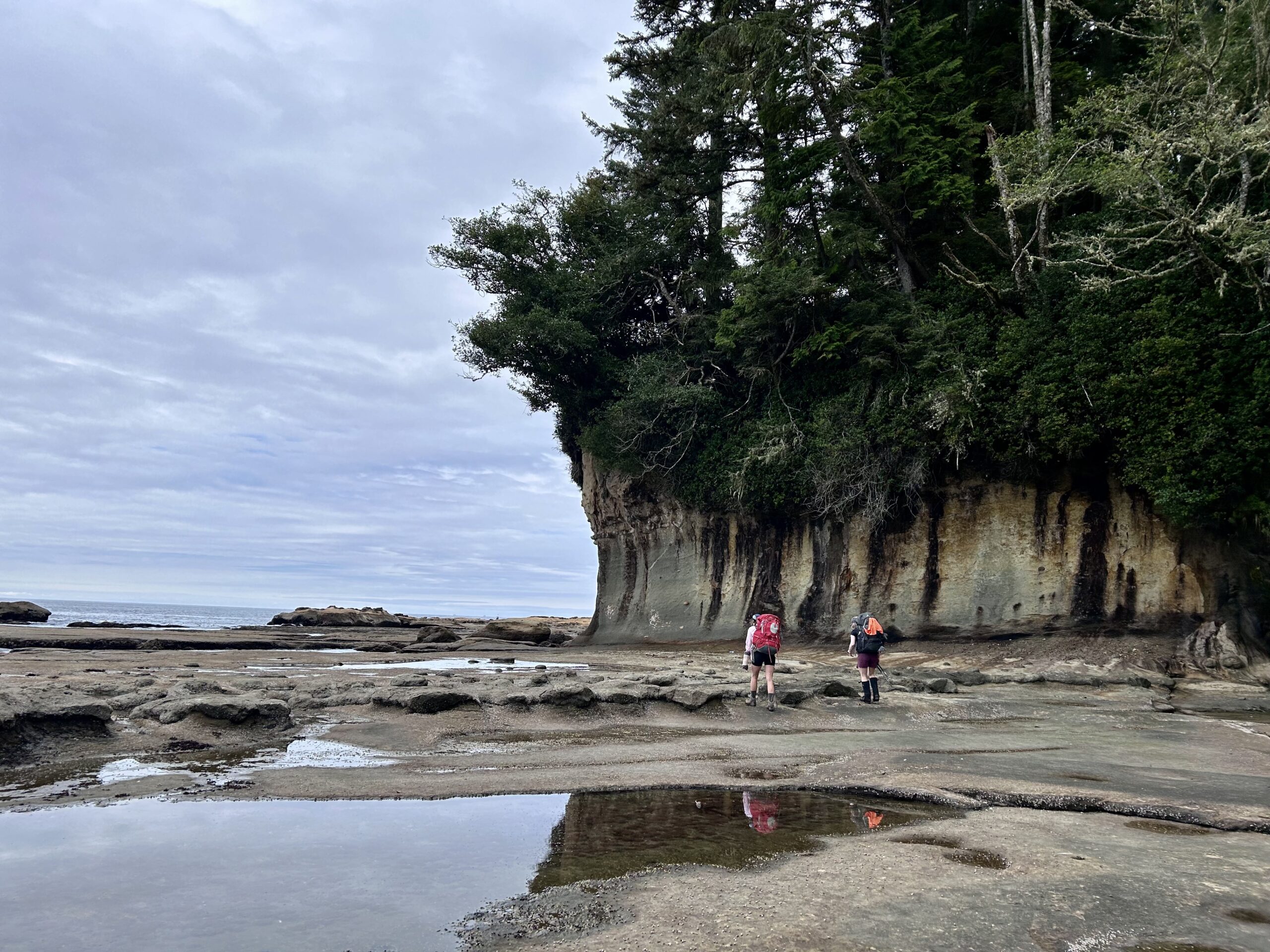Recently, I spent a week on Vancouver island, hiking the West Coast Trail. I wrote about my process and my meal plan in the last post. Now that some time has elapsed since I got back from the trip, I wanted to reflect on what went well, and what could have gone better – with the meal planning specifically.
Things to Change
Let’s start with the ways in which I could do better next time
- Cooking for three: I shared 4 dinners with one friend, and 2 dinners with two friends ie., twice, I was cooking for three. In order to minimize space and weight, I only packed my two-person pot. This worked fine for the first three-person meal, but not so well for the second one! The dish in question was a simplified pad thai recipe. Due to the capacity constraints, I had to cook and season the components in batches. This led to soggy noodles, unbalanced flavours and overall a sub-optimal meal. We all agreed that though delicious, it didn’t really taste like pad Thai, because it was pretty impossible to tweak the flavours as you go in this setup. Lesson learned: don’t make this recipe for 3 if using the smaller pot, it’s not conducive to cooking in batches.
- More soup!: I underestimated how cold the evenings were gonna be. I was fine in terms of layers, but my two portions of miso soup were not sufficient. On the very last night, I ended up grabbing someone’s extra instant noodles and making soupy noodles after dinner (my friend wanted the noodles, I wanted the soup, so it wasn’t really the calories I needed, just a warm and salty drink).
- Snacks: Typically, I don’t feel hungry when I’m active. So after a couple of days, I noticed that I wasn’t going through my snacks as much as I should be. Luckily, I wasn’t off by much. But I did have to be intentional about eating throughout the second half of the trip, with the goal of shedding my pack weight.
- Lookalike ingredients: I was hoping to test out my homemade dehydrated hummus recipe on this trip. When I eventually got to it, I realized that what I’d thought was a bag of roasted chickpea flour, was actually glucose powder! Lesson learned: double check everything before packing. Wasn’t a disaster though, as my half block (100g) of vegan cheese lasted me for 4 lunches, and I still had a pack of store-bought dehydrated hummus left over.
- Fuel: We carried a big fuel canister for all the dinners that I would make (we also had a medium sized one, for the other half of the group) as I was trying to be overly cautious about running out of fuel. Turns out, that was totally unnecessary and we had a lot left over.

Things to Keep
Finally, these are the ways in which my meal plan worked out just as intended!
- Variety of food: I was personally quite thrilled with the variety of the meals and snacks. My top 4 snacks were:
- Chocolate Clif bars: like eating chocolate, but softer and chewier!
- Mushroom jerky: got mine from T&T, but I’ve seen a bunch at Vegan Supply too
- Honey mustard pretzel bites: an addictive mix of salty and sweet!
- Dried mango: this was so candy-like, that I never even touched my pack of gummy candy
- Fuel efficiency: For three of my meals, I used split red lentils that I soaked for a few hours during the day as we hiked. Overall, except for the pad thai that I had to cook in batches, all the dinners took 10 minutes or less. I was quite pleased with how tasty, lightweight and fuel efficient everything turned out to be!
- Ingredient flexibility: By selecting recipes with ingredients in common, and bringing a little extra of the spices and seasonings, I was able to tweak some of the meals as needed. The two ingredients that stand out in this regard are salt and coconut powder. The former is self-explanatory, but the latter allowed me to add calories to meals to make them heavier, if, for example, it had been a longer day or we were hungrier than usual.
- Not carrying tea: I’d briefly considered carrying herbal tea as a warm evening drink, but hadn’t in the end. The biggest drawback with tea is that the bags get wet, adding weight to your pack. It also makes for an ickier garbage carry out. This is not a huge concern for a 1-2 night trip, but I did not want to deal with it for an entire week.
- Amount of food: At the end of the trip, I had one bagel, 2 protein bars, 1 pack of gummies, 1 electrolyte tablet, some miscellaneous spices and 1 pack of dehydrated hummus left over. I ate the bagel while chilling after the end of the trip, and one protein bar on the ferry back to Vancouver. My goal had always been to bring some extra food, but nothing excessive. I think this was just the right amount.

Overall, I was quite happy with how it all turned out. It’s always slightly nerve-wracking when cooking for someone else, especially someone new to backpacking altogether. But the friends enjoyed the stuff I made, and I was personally pretty stoked about packing just the right amount!

